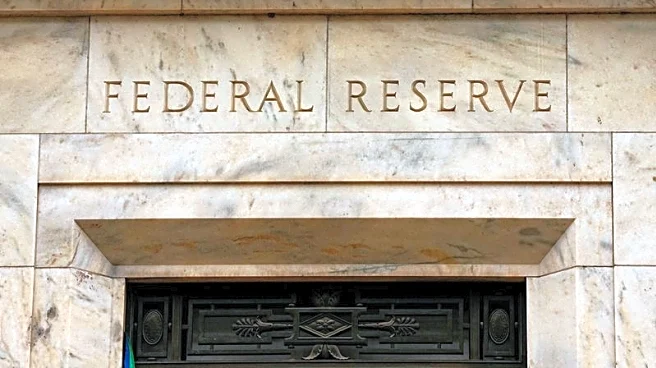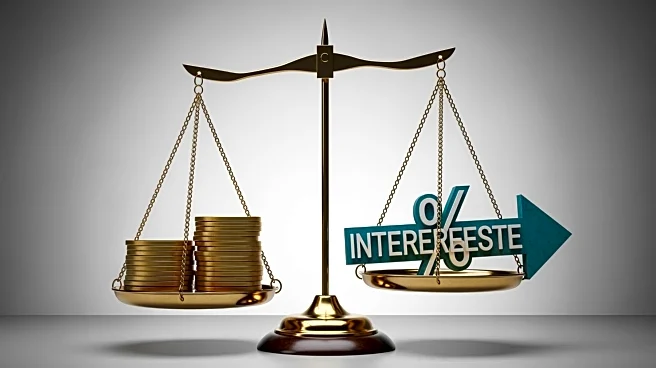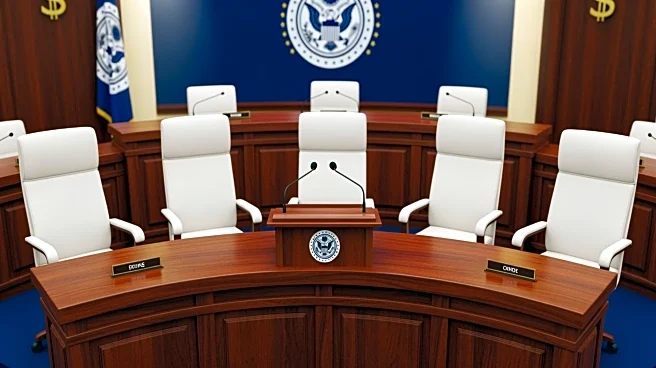What's Happening?
Federal Reserve policymakers are expected to reduce U.S. short-term borrowing costs by a quarter of a percentage point this week, marking the second rate cut this year. This decision is aimed at preventing
further slowing in the labor market, as climbing unemployment insurance claims suggest cooling demand. The Fed's recent statement hinted at 'additional adjustments' in the policy rate, indicating potential future cuts. Analysts anticipate that the Fed may also signal an end to its quantitative tightening program, which involves shrinking its balance sheet. The Trump administration has been vocal about its desire for lower interest rates, putting pressure on Fed Chair Jerome Powell, who faces a divided policymaking committee. Despite concerns over inflation, which has exceeded the Fed's 2% target, many policymakers believe further rate cuts are necessary to mitigate job market deterioration.
Why It's Important?
The anticipated rate cut by the Federal Reserve is significant as it reflects ongoing concerns about the U.S. labor market and economic growth. Lower interest rates can stimulate economic activity by making borrowing cheaper, potentially boosting consumer spending and business investment. However, the decision also highlights the Fed's balancing act between supporting the economy and managing inflation, which has been above target. The move could impact various stakeholders, including businesses seeking lower borrowing costs and consumers benefiting from reduced interest rates on loans. Additionally, the Fed's communication strategy and potential end to quantitative tightening could influence market expectations and investor confidence.
What's Next?
Following the rate cut, the Federal Reserve may face further decisions regarding its monetary policy approach, particularly if economic conditions change. The Fed's communication strategy is likely to be a topic of debate, as it seeks to provide clear guidance on future rate paths. The end of the government shutdown could lead to the publication of new economic data, potentially reshaping policymakers' views on the labor market. Financial markets are betting on additional rate cuts in December and January, but Fed Chair Powell is expected to keep options open without committing to specific actions through year-end.
Beyond the Headlines
The Federal Reserve's actions could have deeper implications for the U.S. economy, including long-term shifts in monetary policy and its impact on inflation expectations. The decision to end quantitative tightening may affect the Fed's balance sheet and its ability to respond to future economic challenges. Additionally, the political pressure from the Trump administration highlights the intersection of economic policy and political influence, raising questions about the independence of the Fed and its decision-making process.












